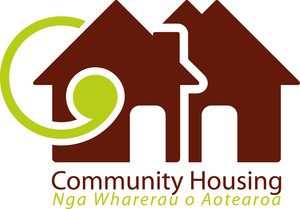
Inclusionary zoning has been the key to success in providing affordable housing in Queenstown, according to Executive Officer Julie Scott of Queenstown Lakes Community Housing Trust.
Under the Queenstown Lakes planning process, a developer who applies to rezone a rural area to an urban zone must allocate 5% of the land to the Trust which then uses the land to build affordable housing which is helping to address the housing stress in their community.
This novel approach of using inclusionary zoning alongside a local community housing trust was reported on by Julie at the recent CHA-IMPACT 2017 Conference at Te Papa in Wellington. She told the conference that the Trust operates three programmes, has net assets of over $15 million, and an interest in $28 million of property. The 5% allocation is the source of most of the Trust’s assets, which are “building an enduring asset for the wider community”.
Since setting up in 2007, the Trust has had 1138 households register interest in their housing services. “We’ve been able to work with 150 of them so far,” says Julie. “Around 430 remain on the waiting list, and the number increases by 20–30 a month. It’s thanks to inclusionary zoning – a legacy of our forward-looking Council – that we’ve been able to do this.”
Inclusionary zoning has also enabled the Trust to leverage grants from Government and Council.
Julie believes that local authorities can support the delivery of social and affordable housing in their communities in many ways. Inclusionary zoning works well in Queenstown and could work well in other communities, as could partnerships with local community housing providers using council land.
The Queenstown approach was the subject of a recent piece of research by Sense Partners who found that there is no significant impact on house prices where inclusionary zoning was used to deliver affordable homes in local neighbourhoods. Some of those opposed to including affordable housing in new developments have argued that it brings down prices in the rest of the neighbourhood. This analysis of the actual experience in Queenstown, supported by international evidence, demonstrates this is not the case.
Di Anorpong from the Ministry of Business, Innovation and Employment (MBIE) says the tool to help understand the extent of local demand for affordable housing at a local authority level is the new National Policy Statement (NPS) on Urban Development Capacity. This creates a requirement for local government planning and monitoring to include housing affordability. “It provides an opportunity for councils to take a whole-of-city rather than a whole-of-council approach to establishing housing use and demand at a local level” she said.
The NPS was made operative in December 2016 and is now a permanent, long term feature of local authority planning. Monitoring of local housing markets are expected every quarter from June 1 in medium and high growth areas. Three yearly development capacity assessments are required to determine if housing supply is matching housing demand, with responsive planning a requirement where there is a mismatch.
One of the measures councils are required to measure against under the NPS is affordability and the new Housing Affordability Measurement (HAM) also from MBIE supports this. HAM is a tier one official statistic introduced in May 2017 to allow the market to be monitored at a more detailed level. It measures how much money households have left each week after meeting housing costs and sets the benchmark at 2013 census figures.
These measurements can be broken down by city and district council level and even to ward-level information for Auckland.
There are two very good things about this measure. Firstly, councils now have a consistent measure of the changes in housing affordability for both renters and entry level homeowners providing a constantly reported statistic. Secondly, the use of a “residual income approach”, means that it measures affordability of housing by making sure that a household has enough money left over after housing costs to pay for the essentials of living.
Local authorities around New Zealand are aware of the many citizens in their communities experiencing housing stress. The NPS on Urban Development Capacity creates a requirement for local government planning and monitoring to include housing affordability.
Queenstown Lakes District Council’s use of inclusionary zoning alongside a local community housing trust to support the development of affordable homes and to meet these new requirements has blazed a trail to address this requirement that other councils could adopt with confidence.






NATIONAL POLICY = LESS HOMES MORE PRICE INCREASE = POLITICIANS NOW OWN MORE PROPERTY THAN ANY TIME PREVIOUSLY.
TALK ABOUT SELF SERVING THEIR OWN INTERESTS AHEAD OF OURS!!!!!!
NACTIONAL = CORRUPTION.
ALL PART OF NACTIONAL’S PLAN FOR THEIR OWN “BRIGHTER FUTURE” & NOT OURS.
Comments are closed.